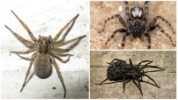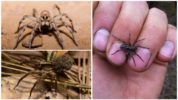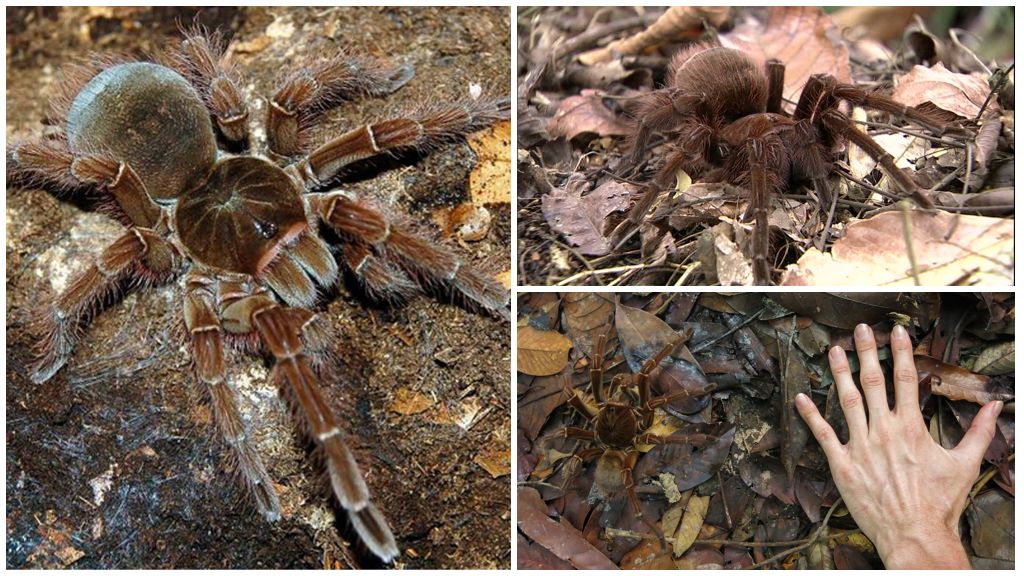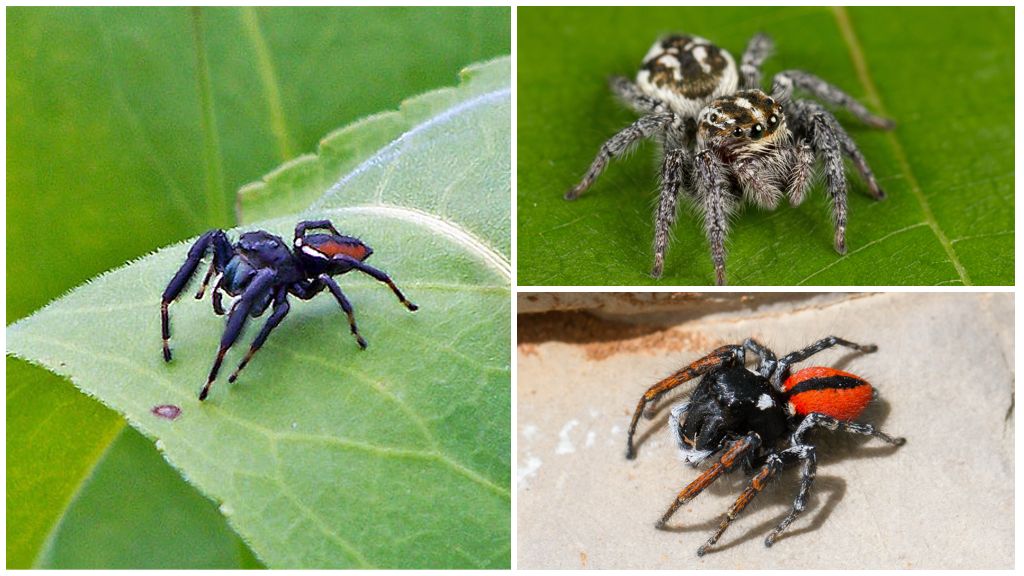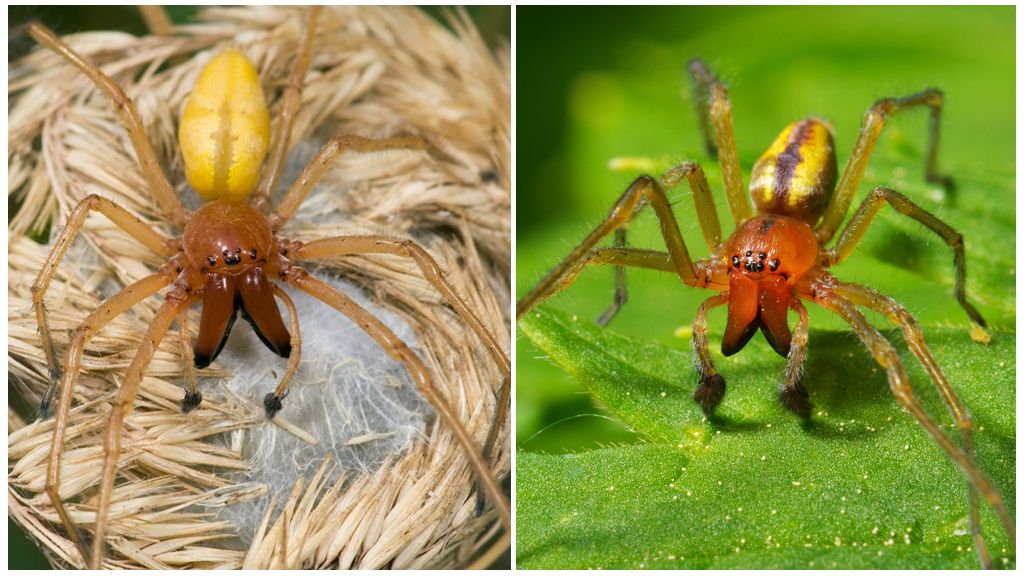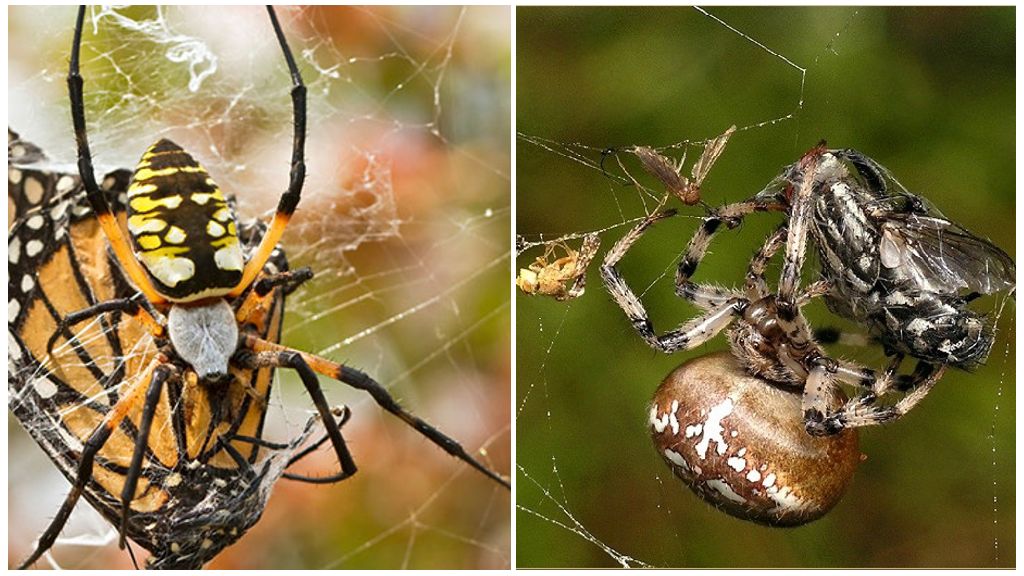- Wolf spiders
- Wolf spiders
Spider wolves got their name for habits similar to the behavior of real wolves. Representatives of this family of large arthropods lead a nocturnal lifestyle and hunt without the help of a web, driving the victim. The family has nearly 2.5 thousand species. These arthropods do not live only in ice. They have no one to catch there. Even in Greenland, there are spiders from the Lycosidae family, but only on the relatively warm coast, where you can find soil and insects.
Family Description
Spiders wolves are large arthropods that do not build a web. Some species reach a size of more than 3 cm. Representatives of the family have a primitive body structure. All internal organs are located in the large abdomen. The functions of the cephalothorax fell:
- vision;
- movement;
- breathing
- touch.
And also spiders wolves eat in it.
Body structure
All species of the family are night hunters. Because of this, “wolves” have well-developed vision. Spider eye on the cephalothorax usually 4 pairs, which are located in 3 rows:
- lower - 4 small eyes;
- medium - 2 very large eyes;
- upper - 2 medium-sized eyes.
Big eyes are adapted for night hunting. Sensory hairs located on the legs and body are responsible for the touch of “wolves”.
On a note!
Eyes glow at night in artificial light and the animal can be detected using a flashlight.
Paws of representatives of the family of medium length, but thick and powerful, number of legslike others species of spiders. Provide animals not only the ability to run, but also to jump. Wolves do not jump as far and high as spiders. horse spiders. "Wolves" just need to be able to catch prey.
The spider glands use all these arthropods to braid the walls of their den. As their hunting nets web not applicable. Females wrap eggs in a spider web cocoon. They carry a cocoon with them. To prevent the cocoon from dragging on the ground, the spider keeps its abdomen raised.
Interesting!
A female with a hatched cocoon is able to hunt on her own.
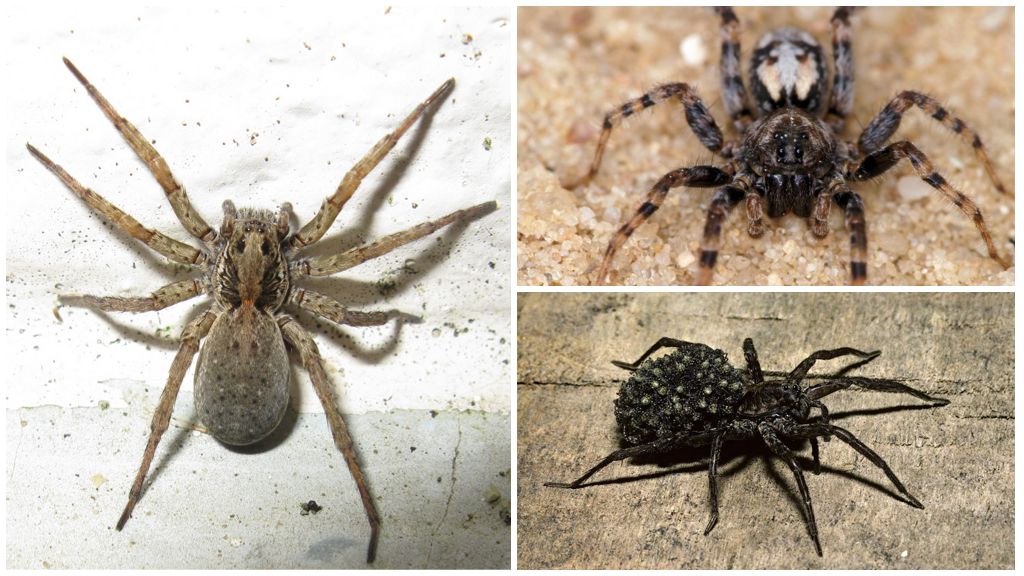
The Lycosidae family does not have protective mechanisms against enemies, except for the protective color. In the photo of wolf spiders, it is clearly visible that their main color is gray. Types are brown or black. Individuals with a light color may come across. But this is either a young spider after molting, or a cave species, where the color does not matter.
Interesting!
Kaya cave spider not only has a light color, but also completely lost its eyes.
Differences between male and female
In wolf spiders, sexual dimorphism is developed, but "in the opposite direction." In animals, males are usually larger and stronger than females. There are few species where the inverse ratio. Spiders are wolves from such exceptions. The male is smaller, with a darker color, but well-developed pedipalps. The best development of pedipalps in males is due to the fact that in male spiders, reproduction organs are located on these limbs.
Breeding process
Tropical species mate throughout the year. The inhabitants of temperate latitudes begin the process of reproduction in the summer. The male is taking the initiative. Finding a female, he raises the third pair of legs and, shaking them, approaches the spider. If that applicant is satisfied, she folds her legs and lays down, allowing the male to climb onto his back.To make it easier for the male to mate, the spider lifts the abdomen.
On a note!
After mating, the spider finds shelter and weaves a cocoon for eggs. Having laid eggs, the female braids the cocoon with several more layers of cobwebs and attaches it to the spinning organs.
Like the mammals “namesake”, wolf spiders take care of their offspring. A few weeks after masonry, young offspring are born. A spider gnaws a cocoon and helps the cubs get out into the wild. After hatching, the spider females drag them on themselves. One individual can have 40-100 babies. The amount depends on the type of spider and its size.
Interesting!
The maximum number of spiders is carried by females of the tarantula genus.
Life span
The life spans of wolf spiders depend on their size. Representatives of small species live for about six months. Large spiders can live longer than 2 years. Males do not survive the first year. Spiders and fertilized females go into hibernation.
Habitat
In the dry steppes lives one of the largest genera of the family - tarantulas. Most wolf spiders prefer wet places. Such places are forests near water bodies. You can detect wolf spiders:
- under the stones;
- in the bushes;
- in the meadows;
- in fallen foliage.
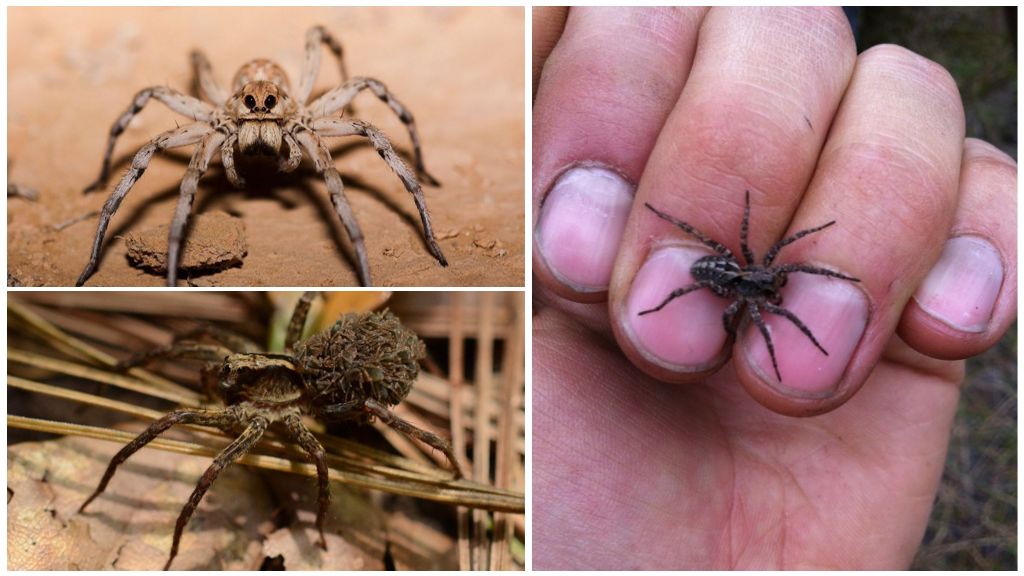
For shelter, the arthropods of this family prefer fallen leaves and forest litter, which is always a lot near the water.
On a note!
The lifestyle, photo and description of wolf spiders are almost the same as that of another family - more poisonous hermit spiders.
Because of this, “wolves” are often killed, although for humans they are practically harmless and perform in nature the functions of stabilizing the number of invertebrates.
Nutrition
Among the family there are sedentary species living in burrows, and stray. But all of them are actively hunting for beetles, their larvae and other flightless insects. Will not refuse to eat a flyif he can catch her. Burrowing species can hunt not only at night, but also during the day. But in the afternoon, they grab only that prey, which itself runs past the mink.
Interesting!
Representatives of this family are grabbing prey in a jump. Before jumping, the arthropod attaches a web to the place from where it will jump. Thus, the animal insures itself from falling from a branch or from somewhere else.
Danger to humans
Real spiders are all poisonous, otherwise they would not be able to absorb food. But few of them are dangerous to humans. Representatives of the family Lycosidae cause fear for their size and appearance, so they are not without reason included in rating of the most scary spiders. But whether wolves spiders are poisonous or not is a relative question. Among them are species of varying degrees of toxicity. It is customary to be afraid of tarantulas, because of which even a tarantella dance arose, according to legend.
In fact, the toxicity of this arthropod family living in a temperate climate is greatly exaggerated. The bite causes local irritation, characterized by short pain, itching and redness.
Tropical species are more dangerous. Their bites cause:
- edema;
- prolonged pain;
- dizziness;
- nausea
- rapid pulse.
The bite is also not fatal, but to alleviate the consequences, you should consult a doctor.
Interesting!
Earlier, some deadly bites were attributed to South American species. Further research showed that the culprits of death were arthropods belonging to other families.
